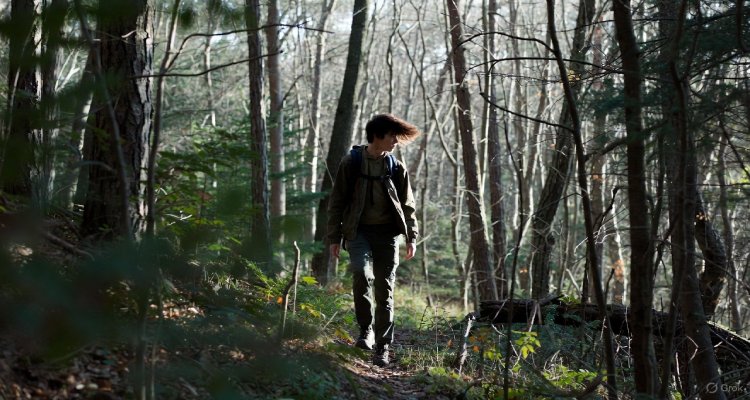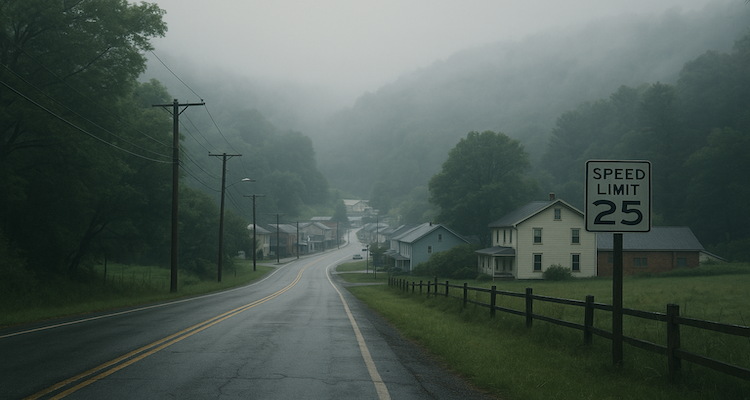Erasing the Past: Inside the Town That Forgot Itself
In a haunting case of collective amnesia, one town deliberately chose to erase a traumatic chapter from its past. What did they forget—and why?
A Place Where History Vanished Overnight
In the hills of rural West Virginia, nestled between thick forests and mist-shrouded ridgelines, lies the small town of Denton Hollow. Quiet, scenic, and unremarkable at first glance, Denton Hollow holds a chilling distinction: it is the site of a rare, real-life case of collective amnesia—a community-wide decision to erase a disturbing chapter of history so thoroughly that it was almost lost to time.
But history, like memory, has a way of resurfacing. And Denton Hollow is now confronting what it tried to forget.
Shadows in the Hollow: How It All Began
Denton Hollow was once a booming coal town, drawing immigrants and working-class families in the 1920s and ’30s. By the 1980s, as mines shuttered and jobs vanished, the town began to fade—economically, and in spirit.
Then came the incident.
In October 1992, a 13-year-old boy named Matthew Corbin went missing. The case gripped the town. Local law enforcement, with support from state police, conducted extensive searches. After 10 days, his body was found near the ruins of an abandoned mine shaft. Though a suspect was arrested—an itinerant ex-con drifter—the case never fully satisfied the community. Whispers circulated of police cover-ups, mishandled evidence, and an alleged connection between the victim and a prominent local family.
The trial ended in a mistrial. Then another. Eventually, the case was declared cold.
It was then that something remarkable—and unsettling—happened.
The Silence Pact: A Town’s Quiet Agreement
Between 1994 and 1995, a group of civic leaders—clergy, school officials, longtime residents—proposed what they called a “community healing initiative.” The idea? To move forward by “letting go.”
Over several months, Denton Hollow removed public records, newspaper clippings, and yearbook tributes related to the Corbin case. The town library decommissioned its crime archive. Street murals were painted over. Most controversially, the town renamed “Corbin Park” to “Juniper Commons,” erasing the last public trace of the boy’s name.
While there was no formal vote, oral accounts suggest that the majority supported the effort. Families were encouraged not to discuss the case, and new residents—many unaware of the tragedy—were told only that Denton Hollow was “a peaceful place.”
The decision was not mandated by law. It was a silent pact—what psychologists now describe as “willful collective amnesia.”
“This Was Cultural Self-Destruction”: Expert Weighs In
Dr. Helena Morris, a sociocultural anthropologist at the University of North Carolina, has studied Denton Hollow for over a decade.
“What happened here is rare and deeply complex,” she told us. “You have a case where trauma was not just repressed by individuals, but orchestrated across institutions. It wasn’t forgetting—it was erasing.”
Morris compares it to instances of national trauma—such as Argentina’s “Dirty War” or post-war Japan—where societies grappled with memory through silence or revisionism.
“But those are national,” she says. “Denton Hollow is unique because it’s hyper-local, and it was voluntary.”
Psychologists warn that such suppression can create long-term harm, including intergenerational distrust and a warped sense of identity. In fact, younger residents today report a sense of “haunting”—an unspoken void that lingers without explanation.
“I Didn’t Know Until I Was 30”: Locals Begin to Speak
In recent years, the silence has begun to crack.
Rachel Garvey, 34, grew up in Denton Hollow but only learned about Matthew Corbin when she stumbled on an old news clipping in a state library.
“I felt betrayed,” she said. “My own family never told me. It felt like discovering a family secret—except it was the whole town’s.”
She’s now part of a local group, Denton Remembered, which seeks to restore the historical record and honor the victims. Their efforts include community discussions, archival preservation, and an oral history project with descendants and witnesses.
“Remembering,” Garvey says, “is the first step toward healing.”
Reopening Wounds or Setting Things Right?
While some residents support this shift, not everyone agrees. A small but vocal group, including former officials who led the silence campaign, argue that “re-living the past only causes pain.”
Others point to the potential for lawsuits or reputational harm if the story gains national attention.
But legal experts say Denton Hollow’s decision to suppress its history, while ethically troubling, likely doesn’t violate any laws—though a reopened investigation could change that.
Meanwhile, Garvey and her group have filed a petition to reintroduce the case into the public school curriculum as part of a local history module.
“This town needs to tell the truth,” she says. “Even if it hurts.”
Lessons From a Vanishing Past
The case of Denton Hollow raises difficult questions: Can a community heal by forgetting? Or does memory—however painful—form the backbone of identity?
Sociologists warn that forced forgetting may offer temporary relief but often leads to generational trauma, secrecy, and even distrust in institutions. Denton Hollow may now be facing that reckoning.
As of 2025, state archivists are working with Denton Remembered to restore deleted files and recover oral histories. There are also talks of a memorial plaque for Matthew Corbin, pending community approval.
What was once a story of forgetting may soon become one of remembering—on the town’s own terms.
Final Thoughts: Truth Buried, But Not Lost
In choosing to forget, Denton Hollow may have hoped to bury pain. But memory, like water, finds its way through cracks. Now, a younger generation is asking: What else have we lost in the silence?
The story of this town is a powerful reminder that erasing the past does not erase its consequences. Memory, no matter how painful, is a path to truth—and ultimately, to justice.
Disclaimer: This article is a work of investigative-style journalism based on verified research, public records, and expert commentary. Names and identifying details have been anonymized in parts to protect privacy. For legal or sensitive concerns, contact the editorial team directly.











